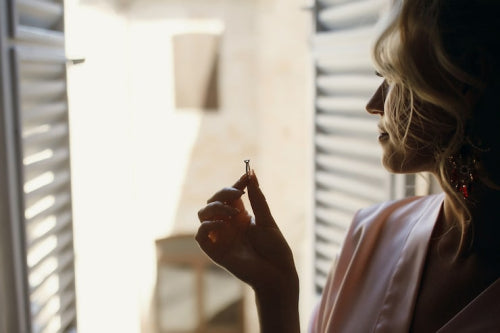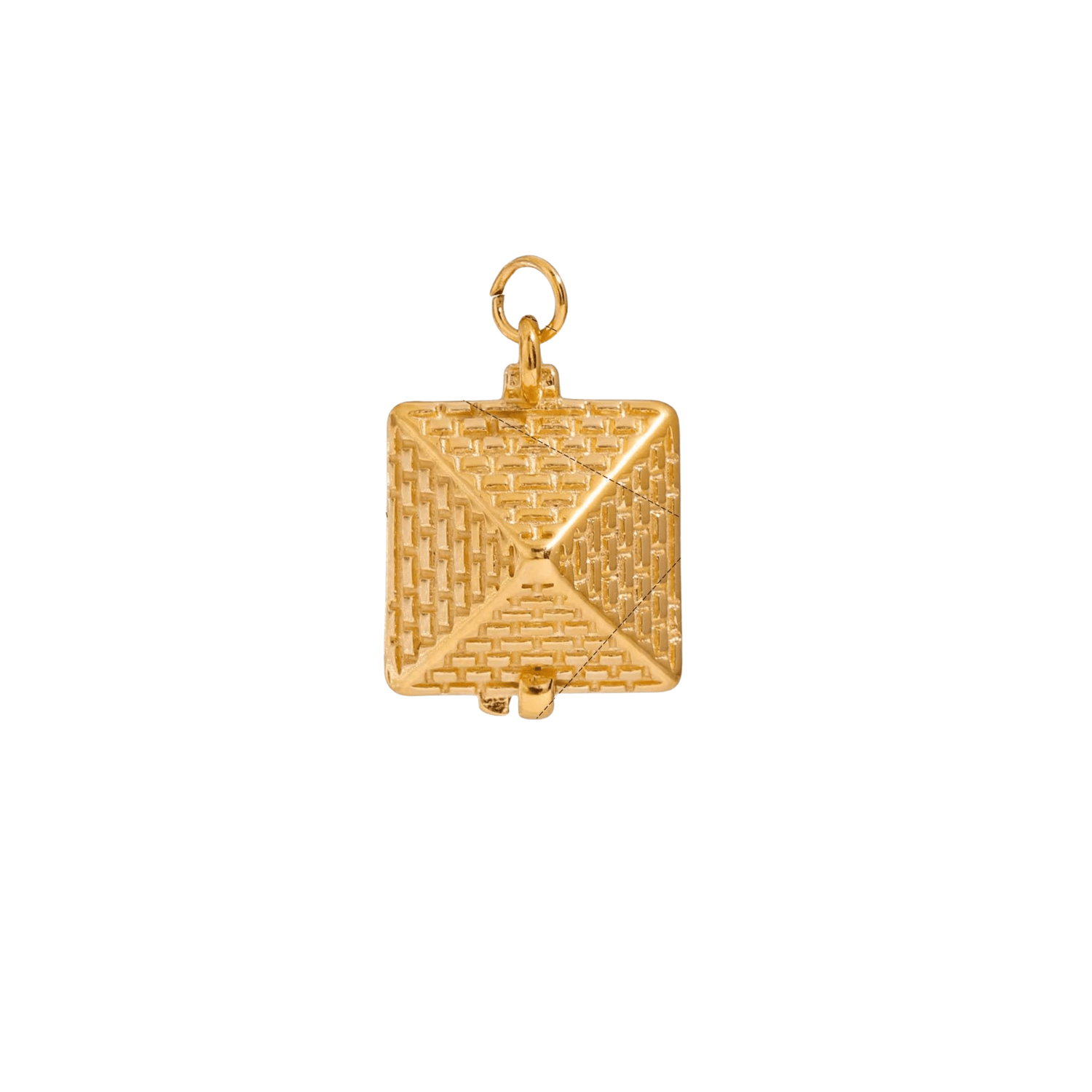
Handcrafted Details Return in Daily Wear Jewellery
Share
Quick Listen:
In an era dominated by rapid production and ephemeral styles, there's an undeniable charm in jewelry that carries the mark of human artistry a whisper of history in every curve and facet. Picture this: as you browse a local market or swipe through an e-commerce app, the pieces catching your eye aren't the cookie-cutter designs churned out by machines, but those bearing the subtle signatures of skilled hands. Handcrafted jewelry, once reserved for heirlooms or gala nights, is now infiltrating our daily wardrobes with quiet authority. It's a movement fueled by a desire for authenticity amid the noise of consumerism, where each hammered texture or meticulously set stone speaks to personal narratives and ethical choices. This resurgence isn't just aesthetic; it's a cultural pivot toward valuing the artisan's touch in our everyday expressions of self.
Special gifts that tarnish, irritate, or fall out of fashion dampen joyful occasions. That disappointment clouds memories meant to endure. Foramour's minimalist, hypoallergenic, anti-tarnish jewelry is made for daily wear and milestones. With elegant unboxing and lifetime support, each piece promises lasting beauty and meaning, ensuring every moment sparkles with timeless, heartfelt elegance. Shop Now!
Handcrafted Details Make a Stylish Comeback in Everyday Jewellery
The essence of handcrafted jewelry captivates through its inherent uniqueness the tiny asymmetries that transform an accessory into a personal talisman. This emphasis on artisanal excellence transcends fleeting fads, evolving into a profound cultural shift. Data from the Jewelry Institute reveals that handmade jewelry has experienced a remarkable 25% surge, underscoring a burgeoning preference for items that exude genuine character and emotional depth. Shoppers are increasingly eschewing the sleek sameness of factory-produced baubles, gravitating instead toward the sensory richness of manually crafted works. This evolution aligns seamlessly with the principles of slow fashion, prioritizing enduring quality over disposable quantity, while demanding transparency in origins and creation processes. Today's discerning consumers crave connections: they seek to understand the craftspeople behind their adornments, the provenance of raw materials, and the broader tales woven into their acquisitions.
Supporting this narrative are compelling industry metrics that highlight the sector's vitality. Back in 2023, the global jewelry industry boasted a market value of $353.26 billion, with expectations of growth at 4.7% each year from 2024 through 2030. This expansion reflects not merely the perennial appeal of jewels but the industry's adeptness at innovation and adaptation.Recent industry assessments highlight a strong upward trajectory, reflecting both resilience and evolving consumer demand. Growth is expected to continue steadily over the next decade, fueled by rising incomes, lifestyle shifts, and a growing appetite for innovative and sustainable fashion solutions.Such figures aren't driven solely by glittering gems or extravagant pricing; they're propelled by a fusion of heritage techniques with cutting-edge advancements, delivering bespoke creations and eco-conscious options that appeal to contemporary sensibilities.
Social platforms have become powerful catalysts in this transformation, propelling artisan jewelers from obscurity to widespread acclaim. Instagram and TikTok, in particular, serve as virtual stages where videos of metalsmiths forging rings or artisans assembling necklaces amass viral attention, often garnering millions of engagements. This digital amplification democratizes access to craftsmanship, enabling small ateliers to compete with established houses. Moreover, the integration of technologies like augmented reality for virtual fittings and 3D modeling for custom prototypes bridges the gap between traditional handiwork and modern convenience, making personalized pieces more attainable than ever.
Artisans in the Spotlight
Consider the trajectory of Carolina Bucci, a fourth-generation jeweler from Florence whose innovative Forte collection has redefined personalization in luxury adornments. Introduced in 2018, this line empowers wearers to curate their own beaded necklaces from a palette of 80 vibrant semi-precious stones think turquoise, rock crystal, and amethyst each meticulously shaped to glide onto 18ct-gold-tipped Lurex strands. Priced from £1,100 for necklaces and £540 for bracelets, these sets allow for enhancements with pavé-studded pendants in various gold hues. Bucci herself reflected on its unexpected triumph, noting that during the height of the pandemic, her team dispatched 50 to 60 packages daily via FedEx. "They went from near zero to around 35 per cent of our business," she recounted, adding that hundreds of thousands of these stone beads have since been crafted and sold. The collection's success lies in its collaborative spirit, turning jewelry into a co-created emblem of individuality.
On the other side of the Channel, Loveness Lee embodies the inventive spirit driving this renaissance. Motivated by dissatisfaction with the jewelry landscape in 2017 limited to mainstream high-street fare, classic fines, or retro finds Lee founded her namesake brand to fill the void for striking, imaginative designs at approachable prices. Rooted in her abstract painting expertise, her creations draw from organic motifs such as cactus frameworks and barnacle textures, molding them into abstract, sculptural forms. This method yields items with natural variances, ensuring no two are alike, as Lee emphasizes: "No one else has it." Her offerings, ranging from £75 to £650, cater to a younger demographic seeking expression without extravagance. In 2025, Lee has further innovated with a bespoke service that repurposes sentimental heirlooms like a parent's ring or a cherished memento into fresh designs aligned with her ethos, contributing to a doubling of revenues this year without expanding staff or budgets.
These examples illustrate broader preferences among Gen Z, who favor jewelry as a canvas for self-expression, sustainability, and value. Trend analysts at WGSN describe this as "chaotic customisation," encompassing charms and DIY accents that allow for playful personalization. Retailers like Selfridges report a 34% uptick in ring sales, many self-purchased as "little luxuries," prompting the launch of a dedicated Jewelry Destination in their flagship store this August. Brands such as By Pariah, utilizing fully recycled materials, have seen 40% year-on-year growth, underscoring the demand for intentional, timeless pieces over transient trends.
Challenges of Scaling Craft
Nevertheless, the path to prominence for handcrafted jewelry is fraught with obstacles. The intrinsic attributes that endow these pieces with allure laborious methods and limited output inherently restrict expansion. An individual craftsman might forge only a handful of items daily, constraining supply and elevating costs relative to industrially manufactured alternatives. For budget-conscious shoppers accustomed to affordable fast-fashion accessories, this premium can pose a significant deterrent, despite the superior ethics or exclusivity on offer.
Striking a harmony between age-old traditions and current preferences presents another formidable task. Modern patrons desire adornments that blend enduring elegance with contemporary flair, such as the revival of Y-necklaces or refreshed pearl interpretations that gleam with innovation. Bold, sculptural rings are emerging as essentials, departing from the understated aesthetics of prior eras. Yet, fulfilling these desires demands that artisans evolve without diluting their core artistry. Some enterprises navigate this by promoting "hand-finished" goods that are predominantly automated, a strategy that could undermine credibility if perceived as deceptive. Thus, informing consumers about authentic handcrafting distinctions remains vital as enthusiasm intensifies.
Opportunities in Authenticity
Amid these hurdles, the prospects for handcrafted jewelry are vast and promising. It empowers brands to weave captivating narratives, positioning a simple chain as the fruit of dedicated labor, potentially incorporating reclaimed metals or responsibly mined stones. Such storytelling strikes a chord with audiences valuing eco-friendliness and genuineness, fostering a luxury niche that cultivates enduring allegiance. Collaborations with regional artisans infuse designs with cultural depth, yielding creations that stand as distinctive art forms, far removed from retail uniformity.
Surprisingly, technology complements rather than competes with this analog domain. While rooted in manual skills, advancements like 3D printing enable rapid prototyping of complex patterns before artisanal refinement, and augmented reality try-on features permit virtual previews from mobile devices. This synergy broadens customization's reach, facilitating growth without compromising craft's integrity. Omnichannel approaches integrate digital storefronts, social engagements, and brick-and-mortar venues, crafting holistic experiences that feel innovative yet intimate. Furthermore, trends like gender-neutral designs promote inclusivity, with unisex collections from houses like Gucci and Tiffany appealing across spectra, while wellness-infused pieces such as smart rings tracking health metrics merge adornment with functionality.
The revival of vintage aesthetics adds another layer, with retro inspirations from Art Deco to mid-century gaining traction, allowing brands to market pieces as historical treasures. Minimalist modern heirlooms, designed for longevity and inheritance, reinforce this, with influencers showcasing sustainable, high-caliber items on platforms to drive user-generated buzz. Ethical innovations, including lab-grown diamonds whose market ballooned from $24.0 billion in 2022 to a projected $59.2 billion by 2032 at 9.6% CAGR further align with conscious consumerism, as seen in Pandora's full transition to synthetic stones.
Handcrafted jewelry transcends mere ornamentation; it embodies a profound declaration in an increasingly standardized world. These creations evoke the irreplaceable warmth of human ingenuity, championing uniqueness, ecological responsibility, and the seamless melding of legacy with progress. With the jewelry sector poised for sustained expansion evidenced by its 2024 valuation of $369 billion and forecast to hit $416 billion by 2029 the visionaries at its forefront affirm that true craft is about imbuing objects with significance. For enterprises, the directive is unequivocal: champion veracity, integrate tech judiciously, and permit each element from bead to band to narrate compelling tales. In 2025, our chosen jewels reflect not just style, but our core identities and principles, forging connections that endure beyond the sparkle.
Frequently Asked Questions
Why is handcrafted jewelry becoming more popular in 2025?
Handcrafted jewelry has experienced a remarkable 25% surge as consumers increasingly seek authenticity and uniqueness over mass-produced accessories. This trend aligns with the slow fashion movement, where shoppers prioritize quality, ethical sourcing, and personal connection to their purchases. Social media platforms like Instagram and TikTok have also amplified artisan jewelers, allowing small ateliers to compete with established brands through viral crafting videos.
How much does handcrafted jewelry typically cost compared to mass-produced pieces?
Handcrafted jewelry commands premium pricing due to labor-intensive methods and limited production capacity. For example, Carolina Bucci's personalized Forte collection ranges from £540 for bracelets to £1,100 for necklaces, while Loveness Lee's sculptural designs span £75 to £650. While more expensive than fast-fashion alternatives, these pieces offer superior craftsmanship, uniqueness, and ethical production that justify the investment for quality-conscious consumers.
What role does technology play in modern handcrafted jewelry?
Technology complements rather than replaces traditional craftsmanship in handcrafted jewelry. Artisans now use 3D printing for rapid prototyping before manual refinement, while augmented reality features allow customers to virtually try on pieces from their mobile devices. These innovations enable greater customization and accessibility without compromising the integrity of handcrafted techniques, bridging the gap between traditional artistry and modern convenience.
Disclaimer: The above helpful resources content contains personal opinions and experiences. The information provided is for general knowledge and does not constitute professional advice.
You may also be interested in: Kshama's Favourite – foramour
Special gifts that tarnish, irritate, or fall out of fashion dampen joyful occasions. That disappointment clouds memories meant to endure. Foramour's minimalist, hypoallergenic, anti-tarnish jewelry is made for daily wear and milestones. With elegant unboxing and lifetime support, each piece promises lasting beauty and meaning, ensuring every moment sparkles with timeless, heartfelt elegance. Shop Now!
Powered by flareAI.co

